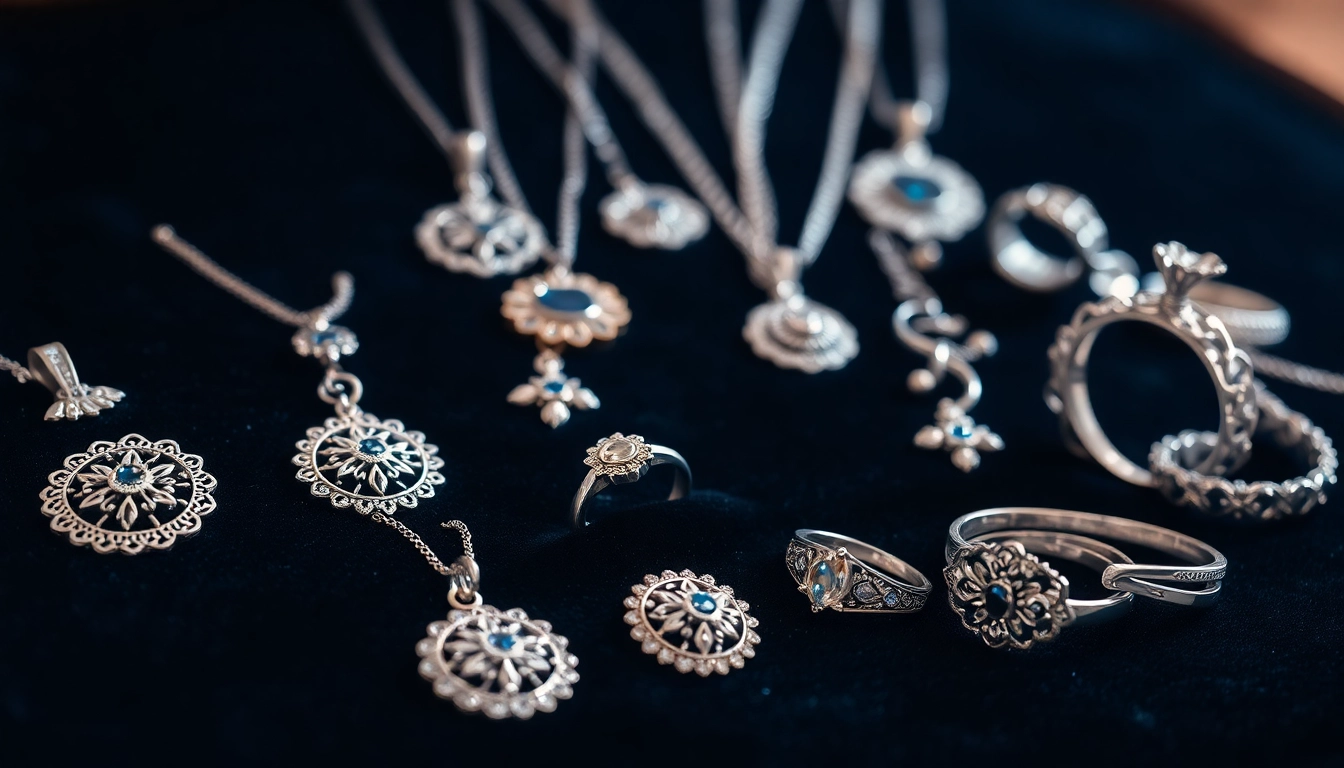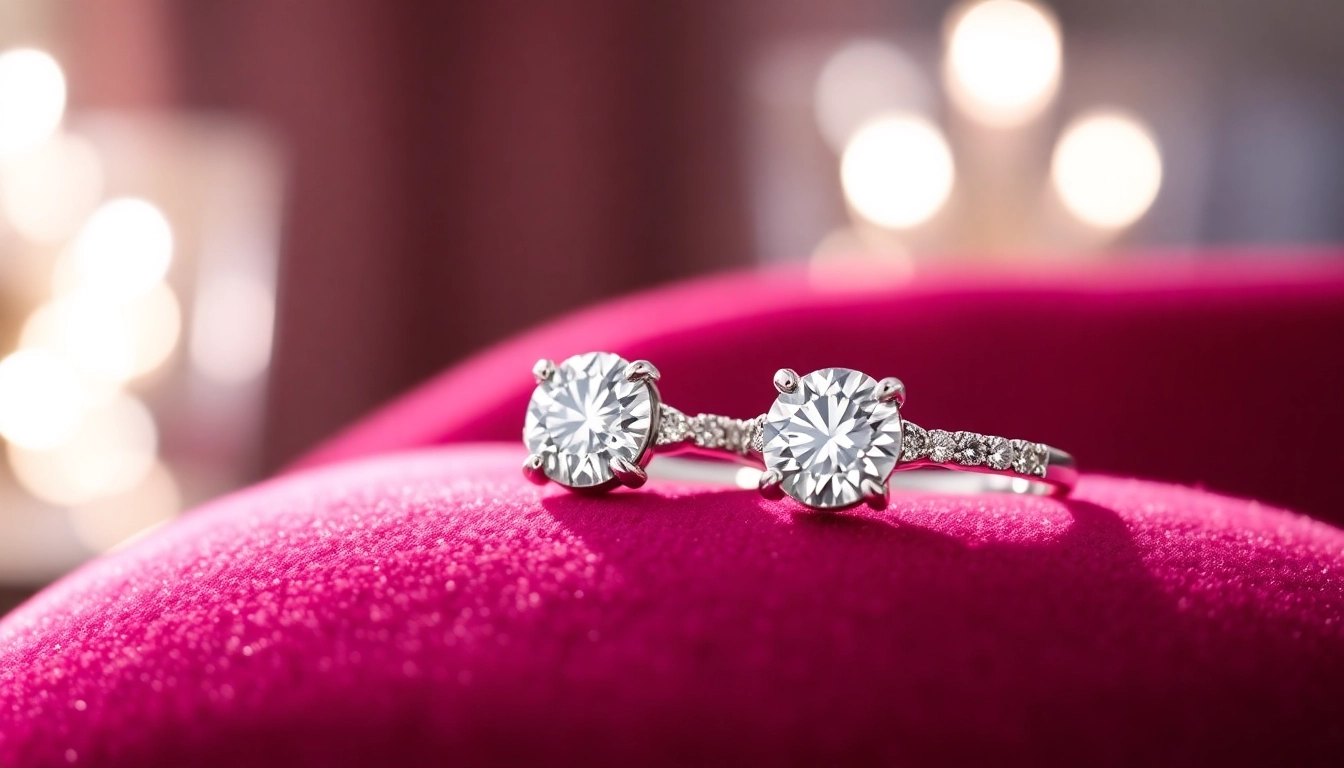Introduction to Silver Jewelry
Silver jewelry has long captivated audiences with its luminous charm and versatility. From ancient artifacts to contemporary designs, silver has been a favored metal for adornment across cultures and eras. The allure of silver jewelry lies not only in its aesthetic appeal but also in its value, symbolism, and the craftsmanship that brings each piece to life. Understanding the intricacies of silver jewelry can enrich your appreciation, enhance your selection process, and allow you to embrace the elegance that it offers.
The Allure of Silver Jewelry
Silver, with its cool tone and reflective qualities, has been associated with various meanings and emotions throughout history. It often represents purity, clarity, and focus, making it a popular choice for personal adornment. Unlike gold, silver possesses an accessible beauty that makes it a favorite for everyday wear, special occasions, and everything in between. Furthermore, silver jewelry serves as a versatile canvas for both traditional styles and modern interpretations, which reinforces its timelessness and adaptability. Whether crafted into ornate vintage pieces or sleek minimalist designs, silver jewelry can complement any outfit and occasion.
Types of Silver Used in Jewelry Making
Not all silver is created equal. The two primary types used in jewelry are sterling silver and fine silver. Sterling silver is an alloy consisting of 92.5% silver and 7.5% other metals, typically copper. This combination enhances its durability while retaining its aesthetic appeal. Fine silver, on the other hand, is 99.9% pure silver, which gives it a softer texture, making it less suitable for intricate designs that require durability. Additionally, silver can be treated with various processes, such as rhodium plating, to enhance its shine and resistance to tarnish. Understanding these distinctions can greatly impact your selection and care practices.
Popular Silver Jewelry Styles
Silver jewelry comes in a multitude of styles, each reflecting different trends and personal tastes. Popular styles include:
- Rings: From simple bands to intricate gemstone settings, silver rings can be statement pieces or subtle accents.
- Necklaces: Chain necklaces, pendants, and chokers offer versatility and can be layered for a modern look.
- Earrings: Silver earrings range from studs to dramatic hoops, catering to all preferences.
- Bracelets: Bangles and cuffs allow for bold expression and can be personalized with charms or engravings.
The Craftsmanship Behind Silver Jewelry
The beauty of silver jewelry extends beyond its surface. The craftsmanship involved in the creation of these pieces is a blend of art, skill, and tradition. Understanding the artistic process provides insight into why a piece of silver jewelry can be worth so much more than its raw material cost.
Techniques for Creating Silver Jewelry
Jewelry artisans employ a variety of techniques when crafting silver pieces. Some of the most common methods include:
- Hand fabrication: This technique involves artisans forming and shaping silver by hand, often resulting in unique, one-of-a-kind pieces.
- Casting: Using molds, molten silver is poured to create specific shapes and designs, which allows for mass production of the same design.
- Electroforming: A process where silver is deposited onto an object (often something lightweight) to create a solid, fully silver piece.
- Engraving: Adding intricate designs and patterns to the surface of silver jewelry, which personalizes the piece and adds depth.
The Importance of Skilled Artisans
The skill level of the artisans who create silver jewelry significantly impacts the quality and uniqueness of the final product. Experienced craftsmen can manipulate the metal in ways that reflect their artistic vision and technical expertise. Artisans often specialize in particular styles or techniques, ensuring that each piece showcases labor, creativity, and individuality. Furthermore, their involvement in local cultures and communities often means that the jewelry is steeped in tradition and symbolism, resulting in much more than just an object but a piece of art.
Quality Marks and Standards
Identifying quality in silver jewelry can be challenging, especially with the prevalence of imitation materials. Legitimate sterling silver pieces are usually stamped with quality marks, such as .925, which indicates that the piece is 92.5% silver. Understanding these marks is crucial for both buyers and collectors to ensure authenticity. Additionally, reputable brands and artisans often provide certificates of authenticity, adding further reassurance regarding the quality of their products.
Choosing the Right Silver Jewelry for You
When selecting silver jewelry, personal preference plays a vital role, but several factors should be considered to ensure satisfaction with your choice. A well-informed approach will help you appreciate your jewelry to its fullest and make smart purchasing decisions.
Factors to Consider When Shopping
Before purchasing silver jewelry, reflect on the following:
- Personal style: Identify your aesthetic preferences. Are you drawn to classic, contemporary, or vintage designs?
- Occasion: Consider where you plan to wear the piece. A delicate necklace may suit a formal event better than a chunky bracelet.
- Durability: If you plan to wear silver jewelry frequently, opt for pieces made of sterling silver for longevity.
Personal Style vs. Trends in Silver Jewelry
Balancing individual style and current trends can be delicate. While it’s fun to experiment with seasonal trends, investing in timeless pieces ensures your collection remains relevant and beloved for years. Choose classic designs that resonate with you, and selectively incorporate trendy elements that can be worn in various contexts.
Tips for Selecting Versatile Pieces
Investing in versatile silver jewelry allows for more diverse styling options. Here are some tips for selecting such pieces:
- Choose simple and elegant designs that can be easily matched with various outfits.
- Select pieces that complement each other, allowing you to layer and create unique combinations.
- Consider functional pieces, such as reversible items or adjustable lengths, to enhance usability.
Caring for Your Silver Jewelry
Proper care and maintenance of silver jewelry are essential to preserving its beauty over time. Regular attention can mitigate tarnishing, maintain luster, and extend the life of your favorite pieces.
Best Practices for Maintenance
To ensure longevity, adopt these best practices:
- Clean your silver jewelry regularly with a soft cloth to remove dirt and oils.
- Avoid exposing silver to harsh chemicals or abrasive materials, which can damage the surface.
- Use silver polish specifically designed for jewelry if deeper cleaning is required, but ensure to read the instructions.
Storage Solutions to Prevent Tarnishing
Proper storage can significantly reduce the likelihood of tarnishing. Implement these tips:
- Store silver pieces in a cool, dry place, preferably in individual pouches or lined boxes to prevent scratches and other damage.
- Consider using anti-tarnish strips or cloths that absorb moisture and minimize oxidation.
- Avoid leaving silver jewelry in damp environments, like bathrooms, which can accelerate tarnishing.
When to Seek Professional Cleaning
Over time, wear and tear may necessitate professional cleaning or repair. If your jewelry shows signs of significant tarnishing or structural issues, consider consulting a professional jeweler. They possess experience and tools to restore pieces without causing further damage, ensuring they maintain their original beauty.
The Future of Silver Jewelry
As consumer preferences evolve, the silver jewelry industry adapts and innovates, leading to exciting new trends and practices in design and production.
Emerging Trends in Silver Jewelry Design
Recent years have seen a surge in minimalist designs along with bold statements in silver jewelry. Emerging trends include:
- Layering: The trend of stacking rings and layering necklaces allows for personal expression with various combinations.
- Personalization: Customizable jewelry that allows wearers to engrave initials, dates, or meaningful symbols has gained popularity.
- Mixed materials: Silver pieces that incorporate gemstones, textiles, or other metals have become favored for their unique aesthetics and textures.
Sustainability in Silver Sourcing
Environmental concerns are prompting jewelers to consider more sustainable practices. This includes sourcing recycled silver and using eco-friendly materials in packaging. Additionally, artisans are increasingly mindful of the ethical implications of mining and manufacturing processes, striving to reduce their environmental footprint while producing beautiful pieces.
How Technology is Transforming Silver Jewelry Production
Advancements in technology are revolutionizing metalwork and jewelry manufacturing. Techniques such as 3D printing are enabling designers to create intricate patterns that were impossible to achieve with traditional methods. These innovations allow for creativity, customization, and reduced waste in the production process. As technology continues to integrate with art, the future of silver jewelry appears both exciting and boundless.



